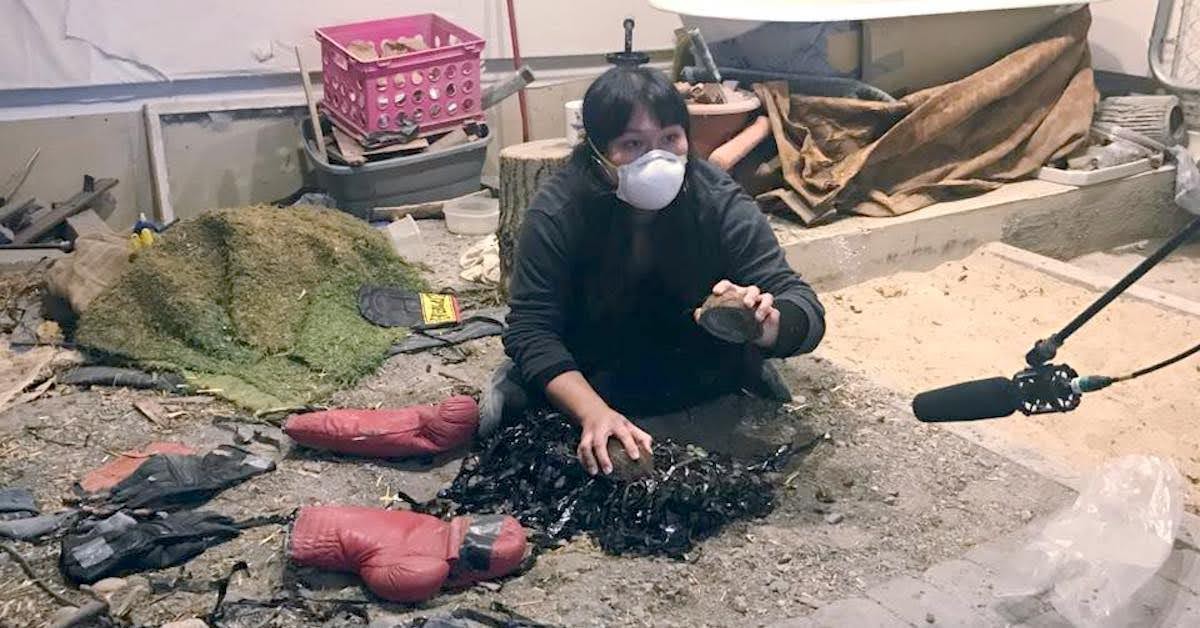Foley is a cornerstone of audio post-production, often described as the art of recreating everyday sounds for film, television, video games, and other media. While many outside the industry recognize it as “movie sound effects,” the reality is far more nuanced. Foley is a practice with a rich history, constantly evolving to meet the demands of modern entertainment.
At its core, Foley refers to both the process of performing and recording sounds in sync with visual media, and the category of sounds produced this way. This encompasses sounds made by characters and their interactions with objects – a door closing, footsteps on gravel, or the rustling of clothing. The lines between Foley and sound design can blur, as Foley techniques are often incorporated into broader soundscapes.
Foley adds depth and realism, bridging the gap between visuals and audio. It’s the secret ingredient that makes animation believable and immerses gamers in virtual worlds. This article will delve into the origins of Foley, its contemporary uses, and its relationship to sound design, demonstrating how it enriches our viewing and listening experiences.
The Origins of Foley Sound
As detailed in “A Brief History of Sound Effects,” Foley’s origins are attributed to Jack Foley, a pioneering sound effects artist. The advent of synchronized sound in filmmaking during the early 20th century revolutionized the industry, giving rise to “talkies.”
Early filmmaking allowed for just one audio track during filming. Jack Foley and other sound artists recreated sounds on screen to enhance the sense of reality for the audience. Because pre-recorded sound libraries were limited, artists often used resourceful techniques, such as shaking a metal sheet to simulate a thunderstorm. These sounds had to be recorded live and synchronized flawlessly due to basic editing capabilities.
Foley Artist Joanna Fang recording with a variety of materials.
Although modern technology offers high-quality on-set sound recording, expansive sound libraries, and advanced post-production capabilities, Foley remains crucial in sound workflows. The methods pioneered by Jack Foley and his contemporaries are still utilized, evolving to meet the industry’s changing demands.
Traditional Foley Techniques
In its purest form, Foley involves manually creating and recording sound effects in sync with a film or other media. During production, capturing dialogue on set takes precedence, frequently sacrificing the detail in sounds such as movement and character interactions. While boom microphones can pick up some action, these “production effects” might not be suitable for the final mix. Foley fills this gap, adding the subtle details necessary to immerse the audience.
Foley artists typically collaborate in small teams, gathering props like shoes, clothes, and utensils to recreate sounds in a scene. Watching the scene on a monitor, artists use visual cues to perform sound effects live in front of a microphone, while an engineer records, monitors, and plays back the audio. This process is also used in game development. After recording, the tracks are edited and refined for mixing, highlighting the skill of talented Foley artists who capture the timing and performance effectively.
Larger film and television productions often employ dedicated Foley studios. These facilities feature soundproofed rooms that minimize external noise and reverberation, equipped with “Foley pits” – recessed floor areas filled with materials like dirt and gravel for creating footsteps – along with water tanks and wardrobes. Smaller productions might use post-production studios or individual sound designers, using similar methods in less specialized settings.
“In short, the job of Foley is to help us suspend our disbelief, but there’s much more to it than that.”
Foley’s Intersection with Sound Design
The techniques of Foley extend into sound design, blurring the lines between the two. For instance, a sound designer could record footsteps for an animated character, then lower the pitch and add reverb to make them sound larger. In game audio, a programmer might record clanking sounds for a heavily armored character, then segment them to play dynamically as the character moves.
Foley stage setup for the film ‘Where’d You Go, Bernadette’ (2019) with Susan Fitz-Simon (Foley Artist) & Glenn Eanes (Recordist). Photo courtesy of Soundcrafter.
Virtual “Foley instruments” – sampler plugins loaded with a variety of Foley sounds playable with a MIDI controller – combine convenience with performance nuance. Footstep plugins allow users to blend footwear, surface sounds, and walking speeds. Other collections provide everyday sounds with optional reverb, and abstract sound design instruments use Foley as the basis for warped textures.
While Foley traditionally recreates sounds naturally, its blend with sound design allows for more experimentation and manipulation. Neither method is superior; however, these differences can cause confusion. Some directors may use “Foley” to generally refer to sound effects, while purists believe Foley must be performed live. The ultimate goal is the final product, achieved by professional stages, libraries, or self-recorded sounds.
Leveraging Foley Sound Libraries
While a Foley specialist is invaluable, budget constraints sometimes prevent hiring one. Fortunately, professional recordists have curated excellent Foley libraries filled with high-quality sounds for immediate use. Professional Foley recordings are useful when you need to replace or enhance production audio, add detail to animated content, or integrate realistic sounds into a game engine.
Libraries such as Odyssey Collection: Foley Effects, Footsteps, and Firearms Foley offer diverse, award-winning sounds labeled with specific metadata. If you’re using SoundQ or the Pro Sound Effects web app, searching “Foley” or filtering by category gives you access to over 2,500 sounds. High-quality Foley is readily accessible, whatever your workflow.
Expanding Your Sound Expertise
Interested in learning about different sound effects? Explore our 101 Series articles, including “Sound Effects vs. Sound Design,” “What is Walla?,” and “What are Ambisonic Sound Effects?.”
